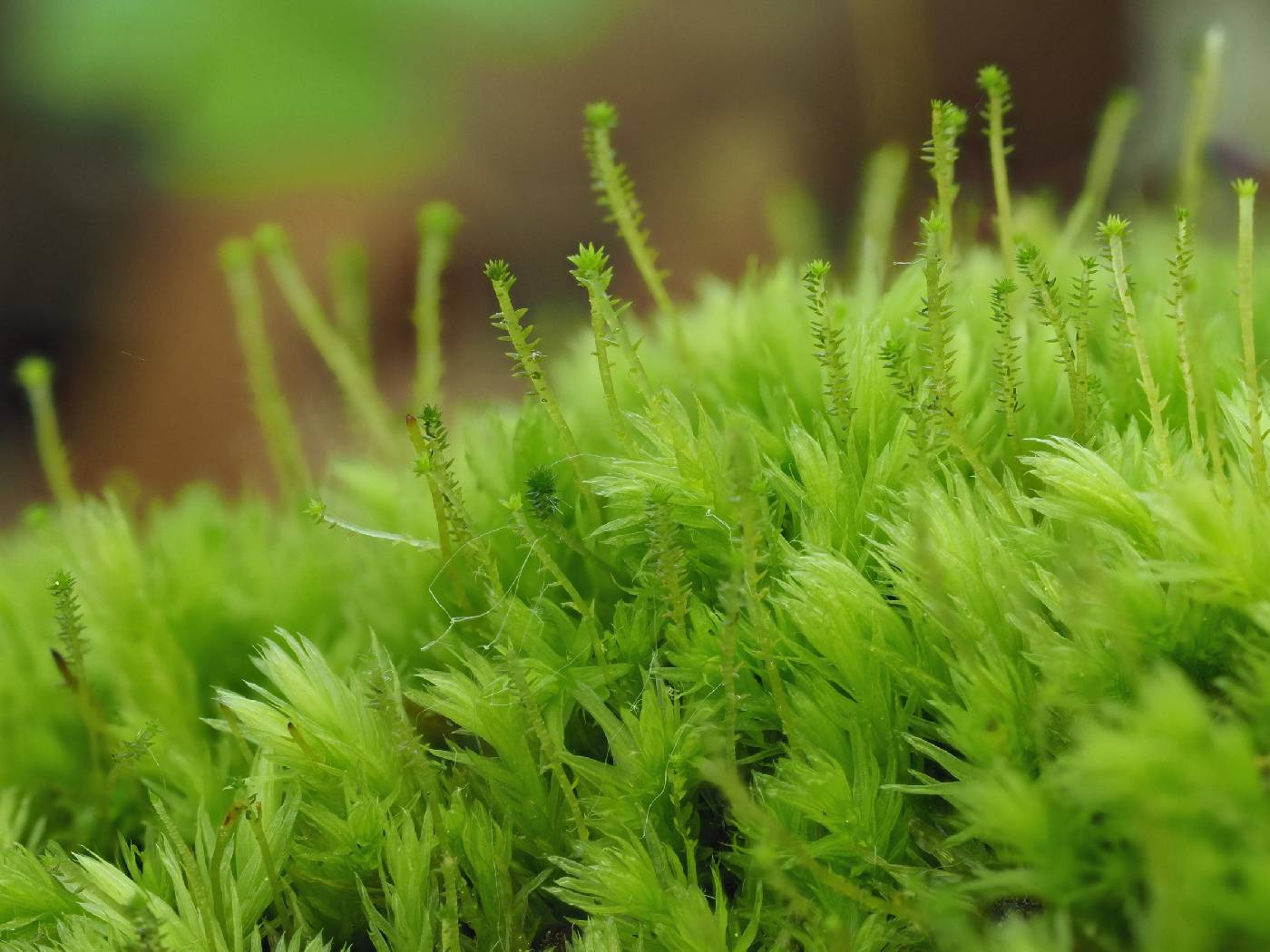
Consortium of Bryophyte Herbaria
- building a Consortium of Bryophytes and Lichens as keystones of cryptobiotic communities -
|
Family: Aulacomniaceae |
Stems: with hyalodermis absent. Leaves: somewhat complanate, oblong-ovate, some asymmetric, concave; base weakly decurrent, abruptly narrowed and rounded to insertion; margins strongly serrate distally; laminal cell abaxial and adaxial surfaces bulging, smooth or low papillose-mammillose, papillae 1 per cell, weakly developed or absent, walls not collenchymatous. : Specialized asexual reproduction by leaflike propagula smaller than more proximal leaves. Sexual: condition autoicous; perigonia budlike in series down stem; perichaetial paraphyses of 8–15 cells. Seta: single, reddish brown. Spores: 10–15 µm, punctate. North America, Asia. Species 1. The separation of Arrhenopterum and Aulacomnium makes the latter morphologically more homogeneous. Arrhenopterum is distinguished from Aulacomnium by leaf stance (more or less complanate) and asymmetry (laminae on either side of the costa unequally wide), prominent marginal teeth, laminal cells with low mammillose papillae or cells bulging and smooth, and autoicous sexuality. The Southern Hemisphere Australian genus Mesochaete Lindberg is sister to Arrhenopterum in molecular phylogenies. The outer perigonial leaves have slightly flaring apices; the inner leaves are concave basally. Stems: with hyalodermis present or absent. Leaves: radially and spirally arranged, lanceolate, oblong-lanceolate, linear-lanceolate, or oblong-elliptic, symmetric, weakly concave to keeled; base broad, decurrent, tapered, scarcely tapered, or slightly rounded to insertion; margins often irregularly serrulate at apex; laminal cell abaxial and adaxial surfaces plane to somewhat domed, usually 1-papillose, papillae prominent, walls collenchymatous or not. : Specialized asexual reproduction by leaflike propagula or absent. Sexual: condition dioicous; perigonia as terminal discoid splash platforms, or budlike in series down stem; perichaetial paraphyses absent or of 9–12 cells. Seta: usually single, red basally, yellow distally. Spores: 8–20 µm, smooth or slightly papillose. North America, Mexico, West Indies, n, w South America, Europe, Asia, Africa, Pacific Islands, Australia. Species 4 (4 in the flora). The outer perigonial leaves of Aulacomnium have flaring apices; the inner leaves are concave with narrowed limbs and broad or conspicuously broad bases. The outer perichaetial leaves sometimes have flaring apices; the inner leaves are narrowly lanceolate and plicate with erect, long-acuminate apices and margins sometimes serrulate at the apex. The basal laminal cells of cauline leaves of this genus are large and smooth. |
Powered by Symbiota.





